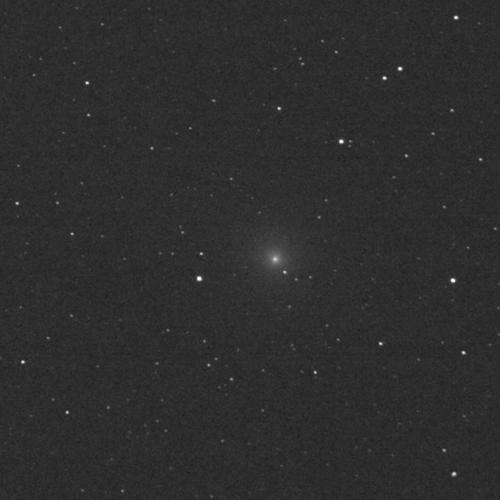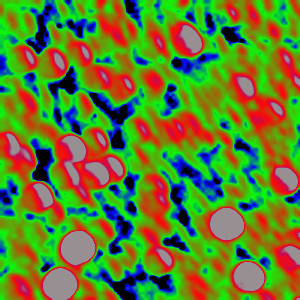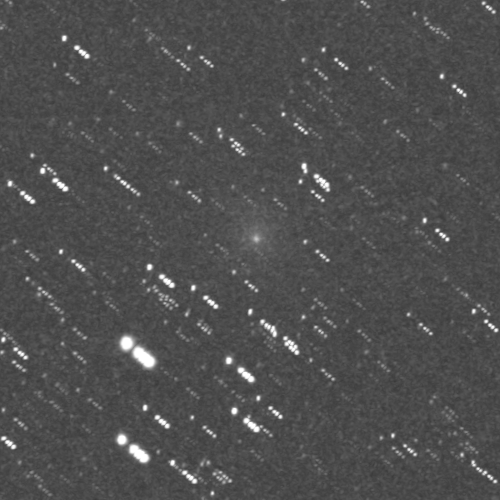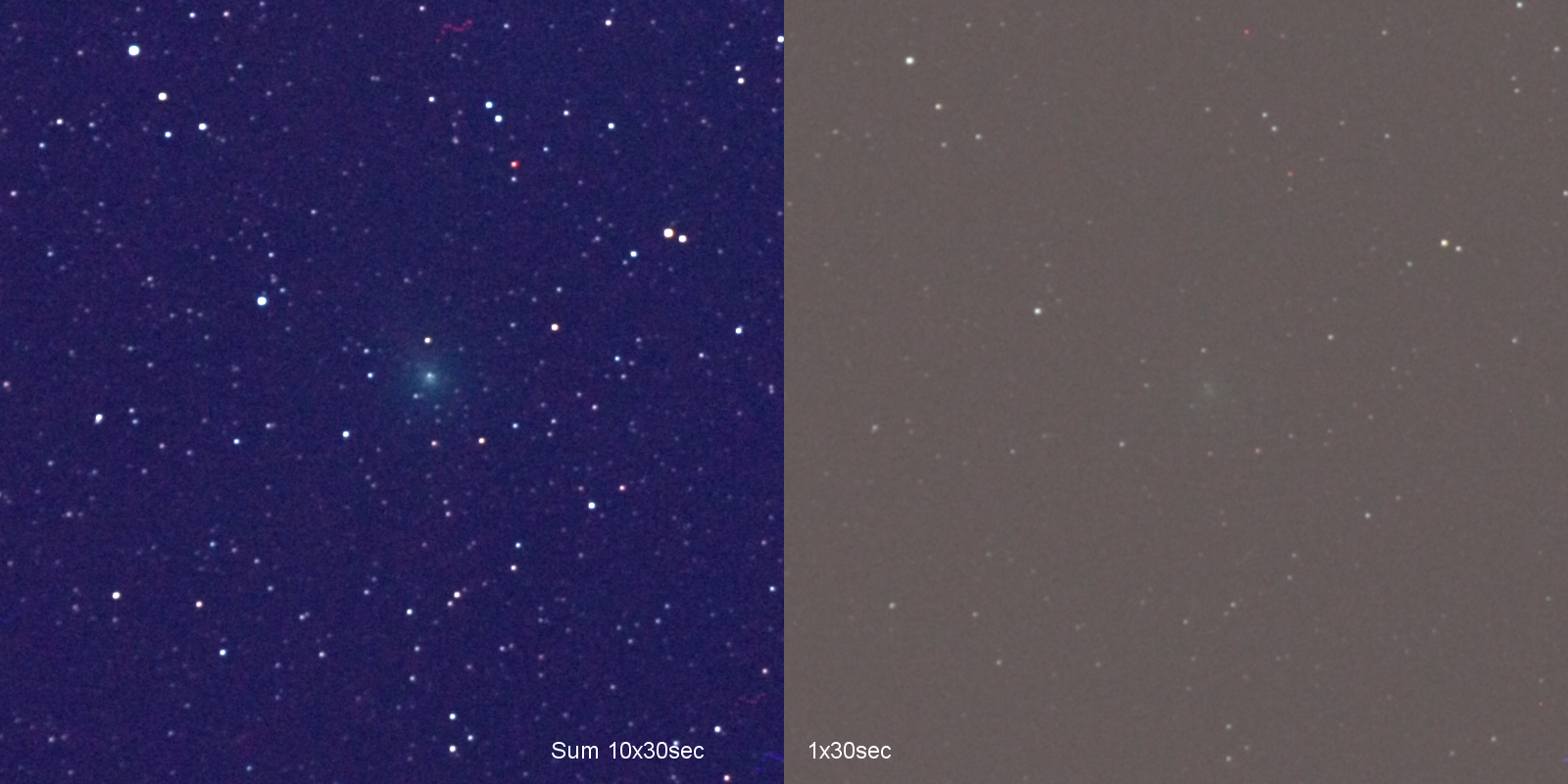Friday, December 19, 2014
Philae's ride...
Friday, November 21, 2014
One fading...another Rising...
Two comets are currently good evening objects here in my backyard. Comet C/2012 K1 PANSTARRS is over head and fading as it moves away. While C/2014 Q2 Lovejoy is rising to be in high position near the zenith by late December. This comet is the one to watch it could get as bright as mag 5.0 and show a long dynamic tail.
update 20141217 - Another go at getting some spectra data, still to close to noise to have any thing definite....
update 20141220 - I can now see the tail in my images with an exposure of 60 secs. A combination of the comet getting closer and it rising higher in my sky.....sum of 14x60 sec images using the EON 80 mm scope and unmodded canon 450D. processed from raw images.
Update 20141228 - Got some good 60 sec subs and a small group of spectra subs. Here is the result of processing using imagej.
Update- 20141212 The clouds finally passed and I was able to get a good set of 45sec images. The comet appears green and stellar, not much tail to be seen here...
Update 20141214 - Tried to get spectra data using a Star Analyzer 100, the fuzzy part.
update 20141220 - I can now see the tail in my images with an exposure of 60 secs. A combination of the comet getting closer and it rising higher in my sky.....sum of 14x60 sec images using the EON 80 mm scope and unmodded canon 450D. processed from raw images.
Update 20141228 - Got some good 60 sec subs and a small group of spectra subs. Here is the result of processing using imagej.
Sunday, October 26, 2014
Waiting for Philae..
The Rosetta lander Philae will be heading for a landing in the next few weeks. I wish I could be there for this historic event. So, I found my analogue for Philae while at the beach....
Something to think about, what would it be like , the sights and sounds of an active comet...??
My sandbox Philae lander ( a Gopro)....
Many years ago STEREO A got this close to 67P....8)
My sandbox Philae lander ( a Gopro)....
Many years ago STEREO A got this close to 67P....8)
Monday, September 22, 2014
Comet C/2013 V5 Oukaimeden
20140922 - This comet is now much brighter than siding spring comet, and is rising in the evening sky. I am just able to see the comet over the fence, when at 25-15 degrees Alt.
update 20140923 - A very different view of this comet from the other side of the sun. Captured in the STEREO HI1B imager from 20140920. Two tail spikes at right angles.
20140926 - In STEREO HI1B images of 20140921, the comet gas/ion tail are dynamically affected by passing solar winds...
20140926 - later this day, here is the comet again from my back yard with EON80mm and Canon 450D , exp60sec iso 800 mono.
 |
| A comparison between these two comets. |
Saturday, September 6, 2014
C2013A1 approaching NGC362
Another effort in the cold of the evening, the dew and cold eventually beat me. The comet approaches as seen in the EON 80mm using DMK51 imager.
Update 20140830 - A much milder evening, not as cold. And as C2013A1 was passing by 47 Tuc and SMC. I had another go . A small image. I can't seem to get much light out of the EON 80 mm so may be bigger light bucket?
Update - 20140905 - This small comet moving along....
Update 20140906 A little bit closer to Mars.....
update 20140927 - Looking for this comet in current STEREO images is proving difficult, I think I have it in this colored scaled crop from HI2B wide fov.
 |
| C20131A1 and NGC362 |
 |
| C2013A1 passing by 47 Tuc |
update 20140927 - Looking for this comet in current STEREO images is proving difficult, I think I have it in this colored scaled crop from HI2B wide fov.
Tuesday, August 19, 2014
Counting Radio Meteors
20140820 – This is a sneek peek, as I am still working on this blog entry...8)
I recently found out that current browser updates now include many experimental features. One of the current good ones is the WEB Audio API. This is a very sophisticated set tool tools to control and manipulate audio within the browser context.
Not just start and stop but many signal processing things can be done to the audio data. So, with this new knowledge. I wondered if I could re-write the processing.org version of the RADMC_Pingometer into a browser based version?
Well, as fate would have I was learning HTML5,JS,CSS,PHP,JQuery via the Codecadmey.com online learning . I highly recommend this learn by example method used by Codecademy.
So, with this little bit of knowledge, I started with raw HTML5,WEB audio api , and promptly blew a few brain cells. Then looking around at all the good examples found in google searches. I found that there was a simpler way. The gang at P5.js have made it easier to convert processing.org Pde’s into P5.js. It is really a modified and adapted processing into web based components. And as luck would have it the Web Audio api is well catered for.
After a few weeks of basic discovery on how things are written in P5.js. I was able to modify a good simple example into the meteor counting tool I had wanted. Ta…Da….
 |
| browser based meteor counter |
It runs from a local host httpserver via a link, so you will need a local server to make it work for you. See the P5.js site for some info on that.
To start playing around with this your self, get the P5.js download and examples working for you. The under this, down load my set of files from the google drive share. A link to your save location of these files via the local http server should show the above web page.
As this is trying to do experimental things in your browser some settings need to be adjusted. In CHROME the developer mode needs to be set on. try to get a current version update or experiment with CHROME canary version.
 |
| Some example pings captured from example Audio wav file. |
How to Setup
This is for the windows users, get yourself the wampserver download from the web, and let it install into the C:/wamp/ location on your drive. A c:/wamp/www directory will be made at that location. That’s where the index.html will launch from and the other web pages and supporting files are below this. A small bit of configuration may be required to make the wampserver listen on another port, find httpd.conf in this location in the wamp directory tree,
Change the listen port number 80 on line 58 to say 4080, or some other number. When done restart all services via the wampserver manager tool some where on your tool bar.

When we re done we should be able to launch three tabs in google chrome , like this…

Next, get P5.js from the web and expand it into the c:/wamp/www location. Then get my files from the google share and expand them to the same location.
Goole share here, Share files, get index.html and spwrdbutton.gif
Labels:
Geminids,
meteors,
P5.js,
processing.org,
radio,
Radio Meteors
Monday, August 4, 2014
Moon hides Saturn
Saturday, May 24, 2014
Listening to SpaceWeather Radio
spent a few hours across 20140523-24 hoping to hear some camel droppings..... that doesn't sound right...... The #Camelopardalids #meteorshower was active on these days they are from comet 209P as earth passed through old remnants of the comets tail.
So used my RADMC_pingo software to capture a few traces. Here' the best looking pings...
So used my RADMC_pingo software to capture a few traces. Here' the best looking pings...
 |
| Radio meteor signal levels |
 |
| meteor counts at the end of each hour. |
Monday, April 28, 2014
Comet C/2014 E2 Jacques
I have been trying to stretch my detection limits using the DMK51 and a 26mm kern lens. Imaging with this setup is very easy to deploy when mounted on the simple AltAz mount I made earlier.

This is a no track, but a drift imaging method. The lens allows a FOV of 15x10 degrees. At an exposure time of about 10 seconds the stars do not trail. Using my custom imaging software I can automatically gather a long sequence of PNG images.
Then using ImageJ to make a registered medium of about 60 images. My lower limits are around MAG ~9 – 10 at a push. But Mag 8 is really about it. So looks like I still need wait for the comet Jacques to warm up a bit more.

Update 20140414 - A clear evening with a beyond three quarter moon. I think I can just about get Jacques to appear after some heavy pixel pushing using ImageJ. Hope it gets a bit brighter.
Here is a cropped section from a 15x10 FOV, seeing down to mag 10. At the arrow very fuzzy..??

This is a no track, but a drift imaging method. The lens allows a FOV of 15x10 degrees. At an exposure time of about 10 seconds the stars do not trail. Using my custom imaging software I can automatically gather a long sequence of PNG images.
Then using ImageJ to make a registered medium of about 60 images. My lower limits are around MAG ~9 – 10 at a push. But Mag 8 is really about it. So looks like I still need wait for the comet Jacques to warm up a bit more.

Update 20140414 - A clear evening with a beyond three quarter moon. I think I can just about get Jacques to appear after some heavy pixel pushing using ImageJ. Hope it gets a bit brighter.
Here is a cropped section from a 15x10 FOV, seeing down to mag 10. At the arrow very fuzzy..??
Update 20140428 - Got a good break last night. The afternoon southerly breezes slowed to still air. A cool and clear night with good seeing. So popped out the ED80mm and 450d Dslr on the eq6. Alignment was good for 30 sec images stacks of 10 images. Got C/2014 E2 Jacques and a few of the old fave's.:D
Tuesday, April 15, 2014
Red Moon rising
Wednesday, February 19, 2014
A new STEREO Comet
Well this was a bit of a surprise.... I had not
downloaded the STEREO images data for a good couple of weeks. I have been
restricting my data usage due to changing personal circumstances(got to get a
real job), so not as active with this stuff. Also I have been working with
processing,org software exploring a few concepts.
Any way, the image viewer I have been working on needed
some current data so I downloaded and processed the FITS images for
20140204 into PNG's. Scanning around the edges I saw this fuzzy move up and
left near the top edge. A very not usual place for a fuzzy. It moved fast and
was almost out of the FOV. So reported to Stereo Hunter Forum and to Mr.
Sungrazer, could be a new STEREO comet....
Then I realized that this was moving out of the FOV and
should have been detectable a few days earlier. So, got to downloading 20140202
FITS data. IT was lower down and much brighter, hmm....must have been there for
a good number of days.
Checked out the online SECCHI images for COR2A, after a
detection report on STEREO Hunter forum. Quite evident as it crossed the COR2A
FOV from lower right to upper left quarter, crossing the center of view.
 |
| the dotted line across the centre is the comet(20140131) the angled lines are stars. |
over night the other members of the STEREO Hunter forum
got active and confirmed the comet and even measured an estimate of the comets
orbit. From Man-to
"As a
quick attempt I assumed eccentricity e=1 for this object in FIND_ORB, thereby I
got the following result:
Orbital elements: WATK14A
Perihelion 2014 Feb 18.476940 +/- 0.268 TT; Constraint: e=1
Epoch 2014 Feb 4.0 TT = JDT 2456692.5 Earth MOID: 0.2865 Ve: 0.0406
q 0.51008071 +/- 0.000731
H 1.2 G 0.15 Peri. 56.86757 +/- 0.25
Node 283.34633 +/- 0.0018
e 1.0 +/- 0 Incl. 135.39576 +/- 0.032
From 86 observations 2014 Feb. 1-4; mean residual 29".611.
Perihelion 2014 Feb 18.476940 +/- 0.268 TT; Constraint: e=1
Epoch 2014 Feb 4.0 TT = JDT 2456692.5 Earth MOID: 0.2865 Ve: 0.0406
q 0.51008071 +/- 0.000731
H 1.2 G 0.15 Peri. 56.86757 +/- 0.25
Node 283.34633 +/- 0.0018
e 1.0 +/- 0 Incl. 135.39576 +/- 0.032
From 86 observations 2014 Feb. 1-4; mean residual 29".611.
Cheers,
Man-To
--------------------------------------------------
Man-To Hui (Cantonese)
Wentao Xu, Wen-Tao Hsu (Mandarin Chinese)
Astrosite: comethunter.lamost.org
Blog: pachacoti.wordpress.com "
--------------------------------------------------
Man-To Hui (Cantonese)
Wentao Xu, Wen-Tao Hsu (Mandarin Chinese)
Astrosite: comethunter.lamost.org
Blog: pachacoti.wordpress.com "
This put the comet some were in the Northern morning
twilight according to my Starry night settings.
In the next few days I looked for the comet in Stereo
HI2A wide field images across 20140210-15, the orbit put the comet in the upper
right quarter of the FOV. No, luck the comet had faded to below mag 10 and was
likely lost to detection and being small and in the twilight not good prospects
for ground detection. An Mpec was released with a proposed orbit solution a few
days later, http://www.minorplanetcenter.net/mpec/K14/K14C25.html
and softcmt file for starry night updated. The comet now has a name C/2014 C2 STEREO.
and softcmt file for starry night updated. The comet now has a name C/2014 C2 STEREO.
So, this morning of 20140220, the tweets from Sungrazer indicated that Hidetaka Sato had used Itelescope T11 to get a set of
confirmation images, very close to the calculated orbit. A much appreciated effort. Amazing that this small
comet was ground detected, and still showing a small active tail.
 |
| image credit Hidetaka Sato |
Monday, January 20, 2014
STEREO image Rotator
Made a bit of software to show the concept of how STEREO takes images around the sun.
Needs more work and more images for a full year worth of rotation, 1 degree per image should do it.
Name that comet.......??
Flickr looked too chunky, so loaded it to Youtube.
Youtube STEREO Rotation concept
Needs more work and more images for a full year worth of rotation, 1 degree per image should do it.
Name that comet.......??
Flickr looked too chunky, so loaded it to Youtube.
Youtube STEREO Rotation concept
Subscribe to:
Posts (Atom)

































